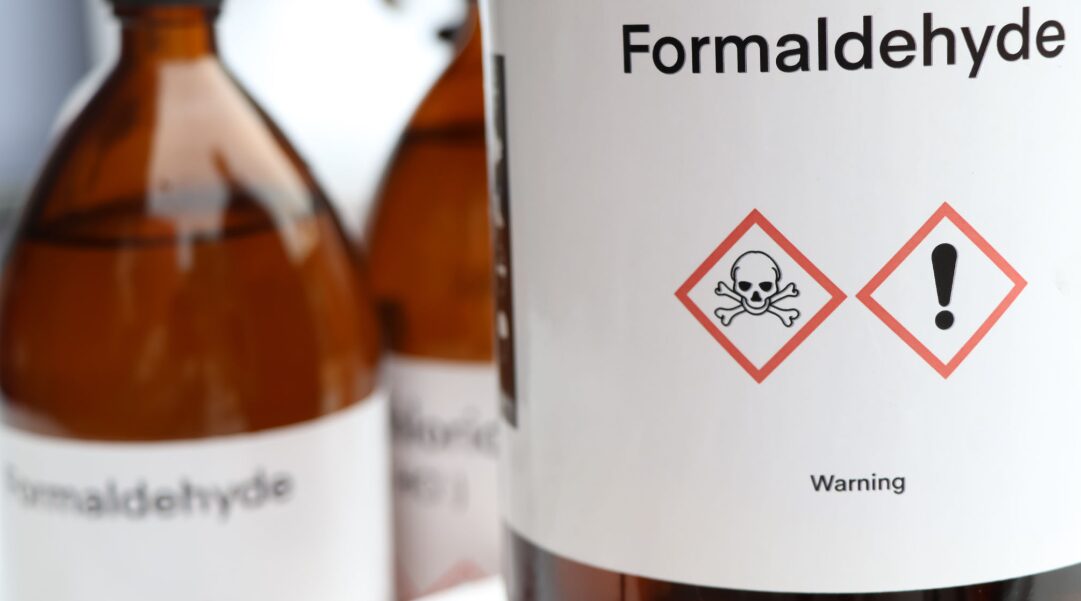How many chemicals do your personal skincare products contain? What are the negative effects of these substances? These are just a couple of questions to ask regarding these over the counter commodities. Now, read the following information from a few government and international agencies.
Formaldehyde is found in the following products: nail polish and glue, eyelashes adhesive, hair gel and soothing products, body soap, baby shampoo, body wash, and color cosmetics. Formaldehyde refers to a colorless and combustible material with powerful smell and manufactured for industrial as well as construction purposes. It is also used widely as germicide, fungicide, disinfectant, and preservative. The chemical can come from decayed plant material in the soil and during chemical processes in many living organisms.
FDA and WHO Positions
The US Food and Drug Administration (FDA) released data stating one out of five cosmetics use a well-known human carcinogen called formaldehyde. Product labels don’t inform consumers the chemical is present. However, almost all manufacturers employ a bit of this effective preservative to extend shelf life.
Meanwhile, the World Health Organization (WHO) as well as the federal government consider formaldehyde as probably capable of causing cancer if people inhale the fumes. It is both an allergen and skin sensitizer. Skincare and cosmetics firms make use of preservative systems that utilize a single or several chemicals described as formaldehyde releasers.
Once added to water, the compounds decay gradually to form formaldehyde molecules acting like a time-release pill. The reaction producing said chemical takes place silently at a constant level while the item sits on top of store shelves or inside your bathroom cabinet.
The chemical, which help prevents microorganisms from growing in water-based products, can be absorbed through the skin. Formaldehyde has been linked to cancer and allergic skin reactions.
Examine Labels Thoroughly
Check the tags carefully if you want to avoid this formaldehyde-releasing substance. Chemicals under the category include the following:
- DMDM hydantoin
- Hydroxymethylglycinate
- Imidazolidinyl urea
- Diazolidinyl urea
- Quaternium-15
- Bronopol
- 5-Bromo-and 5-nitro-1,3-dioxane
The terms are all scientific and difficult to pronounce. However, each one has a common denominator. These chemicals are strong antimicrobial chemical stabilizers used mainly in makeup and personal care products. The FDA does not regulate the amount of this preservative in cosmetics. However, the Cosmetic Ingredient Review, the USA’s industry ingredient safety panel, published voluntary recommendations prohibiting more than 0.2 percent of the additive in personal care merchandise.
Exposure to Formaldehyde and its Releasers
People become exposed mainly through the inhalation of formaldehyde vapor or gas from the air or liquids that penetrate the skin. The amount of this chemical in skincare items may be minimal but exposure to pressed wood, cigarette smoke, and kerosene heaters contribute to the exposure, according to the National Cancer Institute (NCI) and Environmental Protection Agency (EPA).
Skincare products with the preservative content make unnecessary contributions because such items discharge small amounts of the chemical right after application. The good news is some large-scale manufacturers like Johnson & Johnson announced they will stop using releasers in baby and adult care as well as hair care products. Instead, the company will shift to safer alternatives like sodium benzoate.
The EWG has a Skin-Deep Cosmetics Database that contains information on over 77,000 products plus their ingredients. Consumers have reportedly searched this portal 200 million times for toxic compounds such as formaldehyde.
Likely Negative Effects on the Skin
Risks of allergies and rashes increase if you continuously use skincare products with formaldehyde. The hazards may become severe if you have hypersensitive skin. Repeated susceptibility can produce more sensitivities. The chemical irritates the eyes, throat, and nose due to high concentrations.
In the workplace, the Occupational Safety and Health Administration or OSHA strongly recommends workers to wear safety goggles, gloves, and clothing to prevent contact. The bottom line for consumers is to stay away from the ingredient. Something known to be carcinogenic is harmful. It is the last thing that you want to apply on your skin.
Continue watching out for the labels in different products. Pay attention to announcements and guidelines by the FDA, EWG, WHO, and private sector organizations. Even then, the most effective way to avoid the dangerous preservative is by not purchasing makeups and personal care products with formaldehyde content.


Leave a Reply